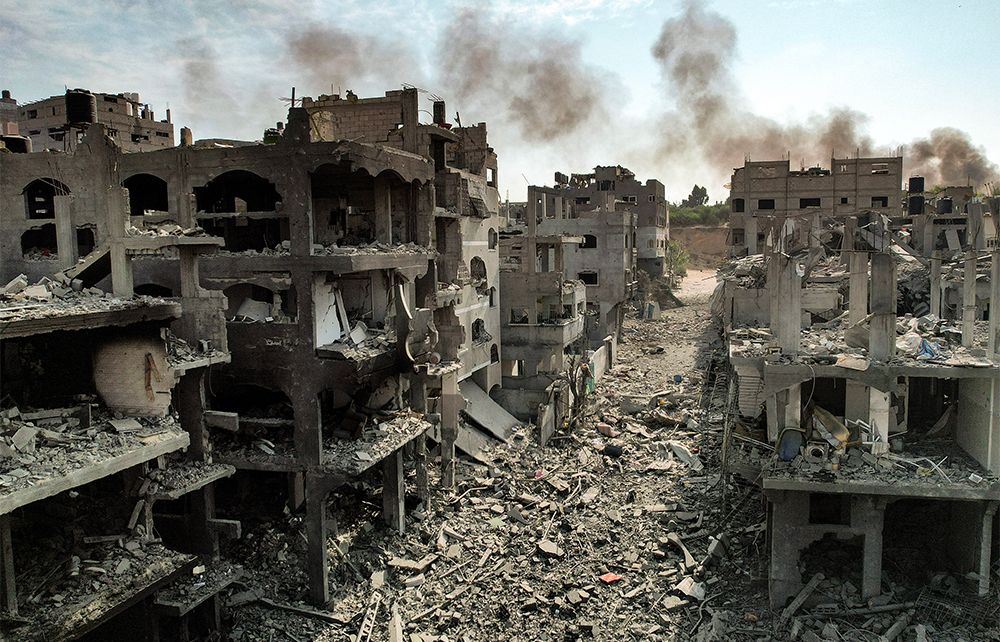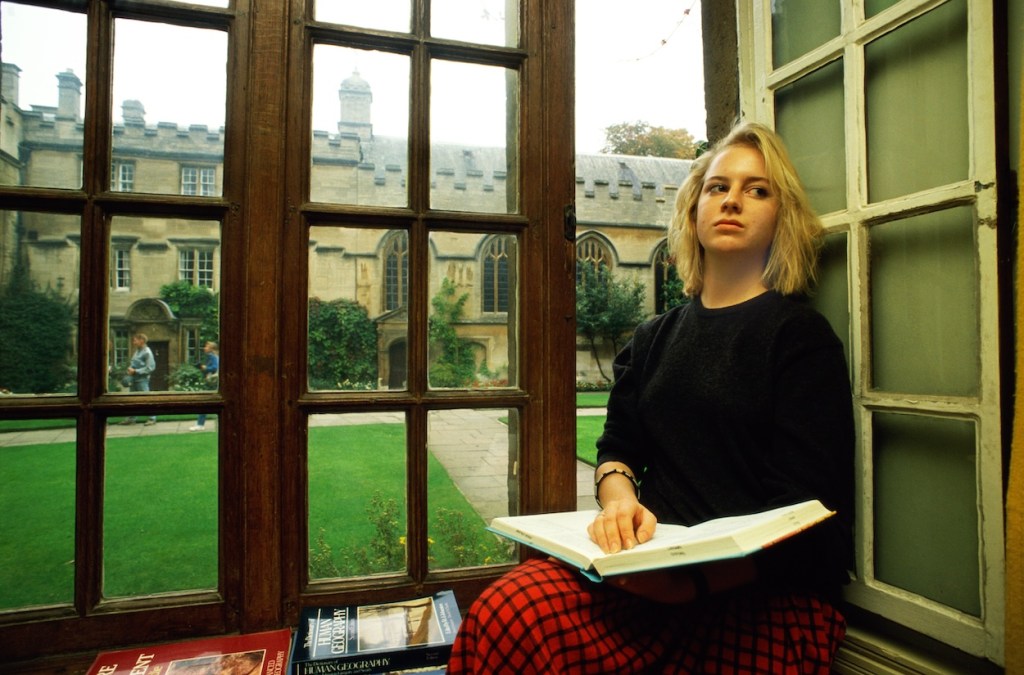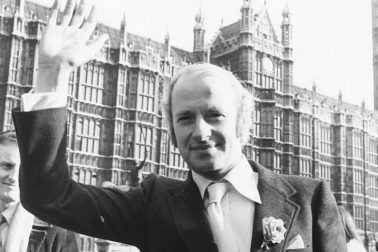Anthony Sattin has narrated this article for you to listen to.
I have been reviewing for decades and this is by far the most difficult book I have taken on: difficult to read because it relates to what Israel has done in Gaza over the last year, and difficult to write about because the subject is so divisive. But whether you think Palestinians deserve what is happening to them or that Israel is a rogue state, please read to the end.
First there is the title. Not Catastrophe, or Genocide, or Reckoning in Gaza, but Daybreak. This is a book that carries the promise of a new day, or a dawning – a book that looks forward, but does so also by looking back over 4,000 years of history. It has come out of a collaboration between the celebrated Jerusalem bookseller Mahmoud Muna and the British author Matthew Teller, whose excellent Nine Quarters of Jerusalem (2022) was a comprehensive and revelatory account of the troubled city. Together, they have approached Gaza residents, a few foreigners with significant experience of Gaza, and some other concerned people, and asked them to talk about the place. The response is a collection of brave, resilient, heartbreaking, defiant, scared stories.
We might start, as the book does, with a short piece from the 28-year-old writer Ahmed Mortaja – ‘Hello. Ahmed from Gaza here.’ On 13 October almost a year ago but less than a week into the current conflict, he worried that in the new normal, houses were bombed and women and children died before they even had a chance to scream. As for himself, he was afraid that he ‘will die and become a number’.
There are several problems with being a number in this conflict – not least the size of the number (the UN suggests more than 40,000 dead so far, based on figures from the Hamas-run Gaza health ministry, and significantly more than twice that number injured) and the fact that the figure is disputed. But what-ever the body count, the point that Mortaja and the book are making is that each casualty is a human being, with a family, a story, a dream. Mainstream western media has given us intimate details of some of the Israeli victims of the Hamas attack last October, and even more of the hostages, but we have had very few personal stories of Palestinian casualties. This is in part because Israel has banned foreign journalists from entering Gaza and has killed more than 100 Palestinian and other journalists and media workers in the territory in the past year. Daybreak in Gaza is in some way a corrective to that.
Here is a range of voices. Some provide diary entries, charting the horror of the bombings and their aftermath, the daily search for bodies, as well as for fuel, food and water. There is the long view of someone like Atef Alshaer, a Gazan author and lecturer at the University of Westminster – ‘It’s something the mind is not equipped to deal with’ – and the nearer view of Izzeldin Bukhari, whose family is from Gaza, but who lives in Jerusalem, where he runs his Sacred Cuisine food courses and tours. In ‘The Ballad of Lulu and Amina’, he tells of the mad journey he made in 2008 through Israeli checkpoints with a white cat called Lulu to attend his sister Amina’s wedding.
Bukhari doesn’t write about food, but others do, as it is central to Palestinian identity, whether it is fish eaten on the Gazan shore, the oranges that were so famous in the long-ago time before the creation of the state of Israel, or Laila el-Haddad’s recipe for meat stew with chard. And food is there in the story from the late Graham Usher, one-time Palestine correspondent for the Economist, whose work Edward Said thought was ‘the best foreign on-the-spot reporting from Palestine’. Usher recorded how, in 2000, the IDF destroyed the house and guava groves of one Gaza family, along with 20 other houses and some 5,000 olive trees, displacing at least 100 Palestinians, in order to ‘defend’ a new Israeli settlement of 242 people.
I was hoping for a view of how Palestinians might view Hamas, but the group are almost entirely absent. When they are present, as in the singer Haifa Farajallah’s story, they seem threatening.
The first-hand stories of the current suffering are harrowing. Imagine, writes Mahmoud Joudeh, that you are given ten minutes’ warning and then ‘your tiny history is erased from the face of the Earth – your gifts and the photos of your siblings… the things you love, your chair, your books, the last poetry collection you read’. And talking of books and history, there is the story of Salim al Rayyes, a bookdealer in old Gaza city and the keeper of Gazan records dating back to the mid-19th century. His shop was destroyed with all its contents, along with the nearby Omari Mosque, part of Gaza’s extensive cultural heritage. The mosque was originally a 5th-century Byzantine church, adapted, rebuilt and restored by successive generations, attacked by Crusaders, Mongols, Ottomans, the British and now by Israelis.
If this extraordinary volume tells us anything, it is that Gaza and Palestine will endure, the monuments will be restored and one day Palestinians will again watch the day break in peace. The question this book cannot answer is how many more people – how much more ‘tiny history’ – will be erased before that can happen.







Comments